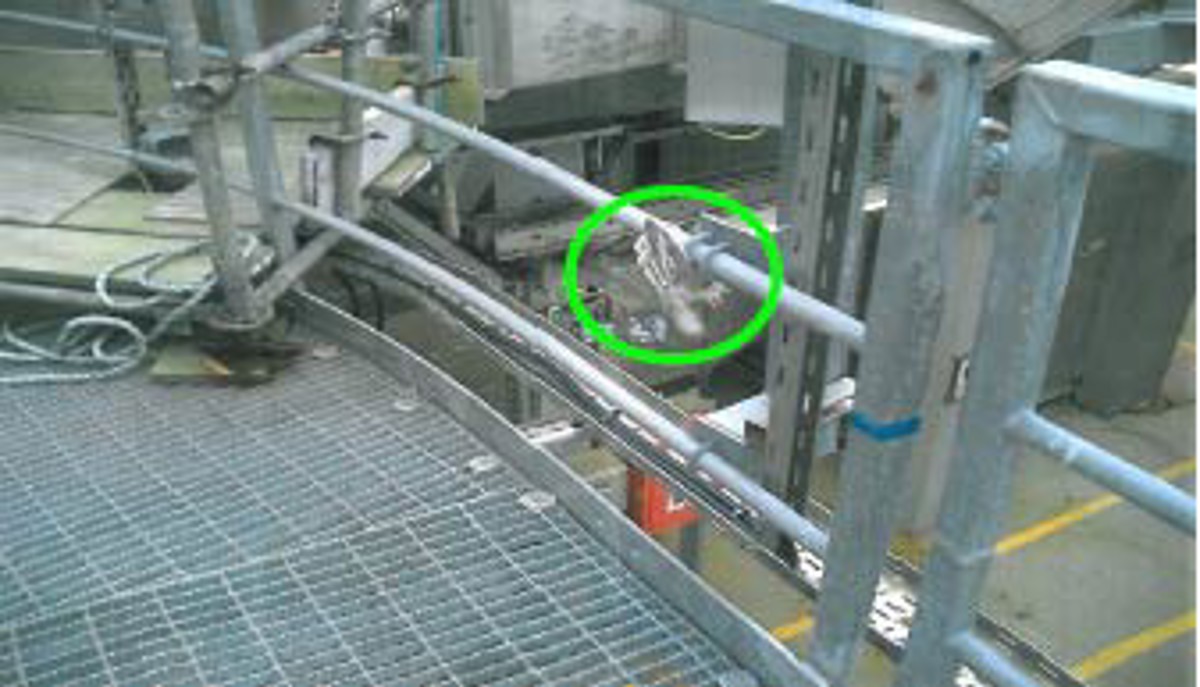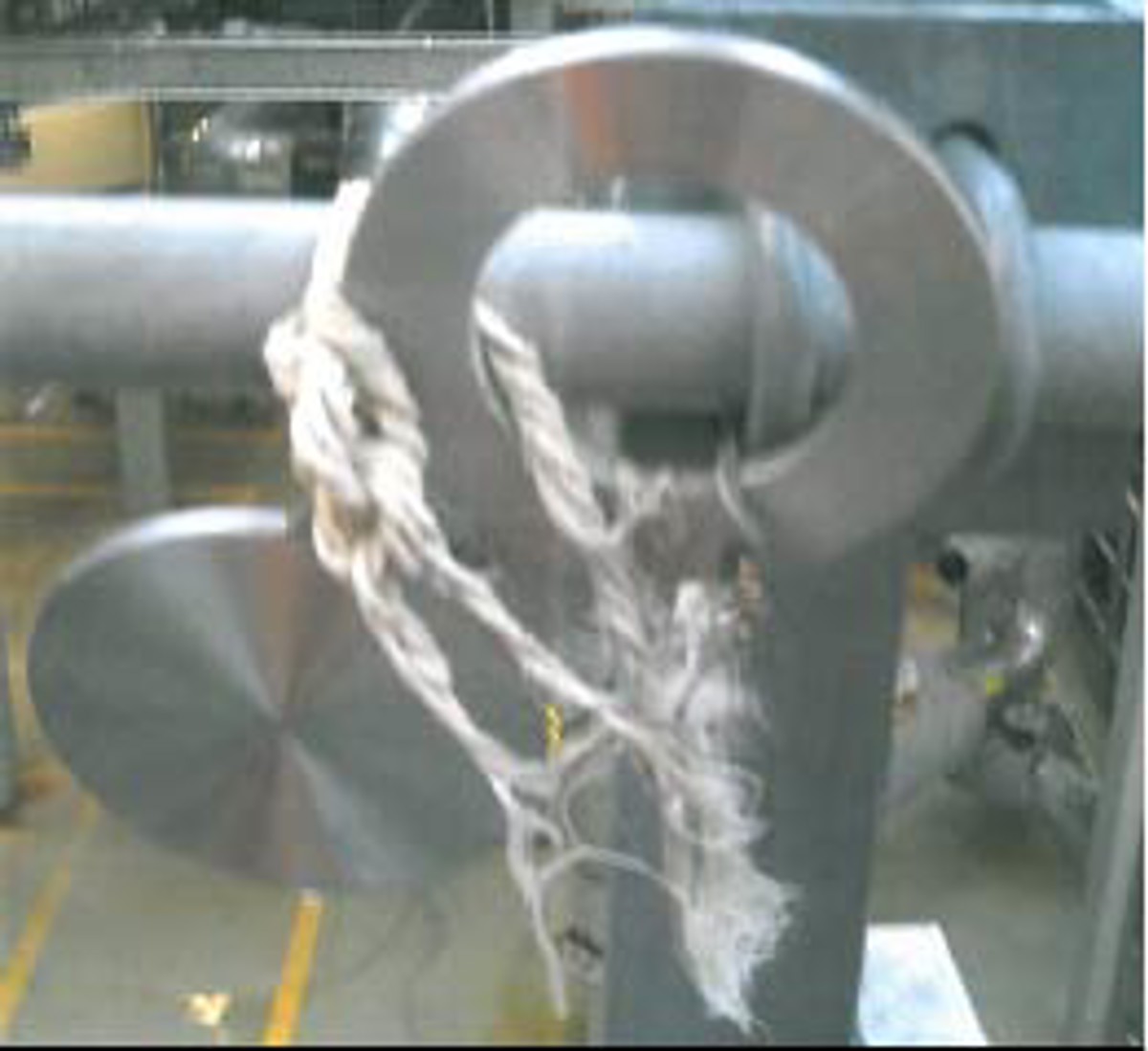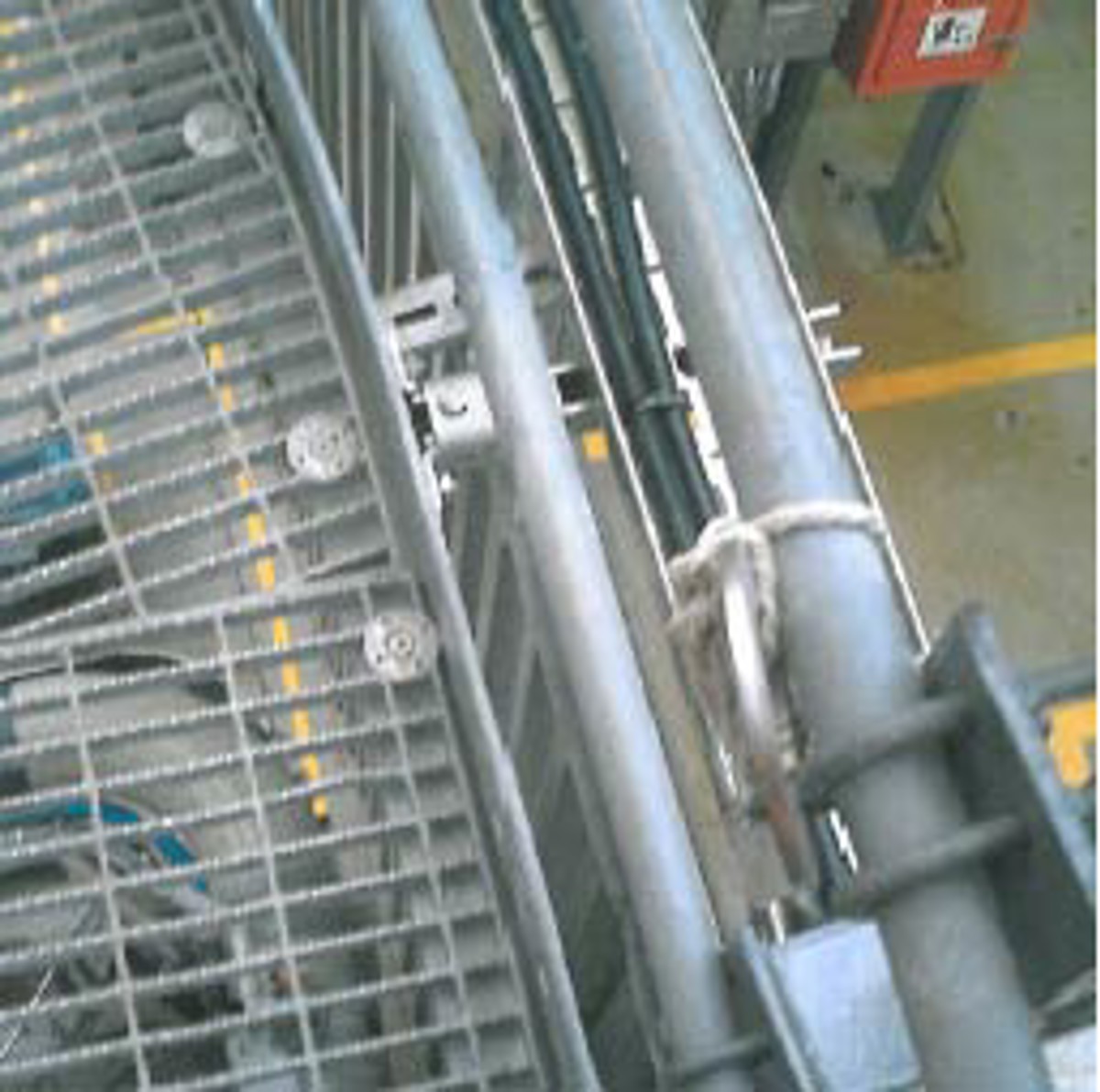Equipment at height not properly secured
- Safety Flash
- Published on 29 February 2012
- Generated on 1 January 2026
- IMCA SF 02/12
- 2 minute read
Jump to:
A member has reported an incident in which tools were found inappropriately secured above a pedestrian walkway.
What happened?
A slip-in spade was found tied to a hand rail with a badly chafed rope. A piece of thin copper wire had been used to compensate for the poor condition of the rope. At the time of the observation, the copper wire had started to corrode and did not appear to be a sufficient method for securing the spade.
The location of the handrail was outside the outer boundary of the decking. This overhang meant that the decking would have provided no protection had the spade become unsecured and had fallen. Directly below the spade was a pedestrian walkway as indicated by yellow markings.
The spade was removed immediately and the observation was reported. There were no injuries.
Our Member concluded:
This observation and subsequent action to eliminate the hazard undoubtedly prevented a near miss or injury to personnel had the spade fallen.
Members are encouraged to forward this information to offshore personnel as a reminder to properly secure equipment and tools when working at height.
Further information on safe working at height can be found in the following IMCA safety promotional material:
- Working at height (pocket card)
- Avoiding dropped objects (poster, pocket card)
IMCA Safety Flashes summarise key safety matters and incidents, allowing lessons to be more easily learnt for the benefit of the entire offshore industry.
The effectiveness of the IMCA Safety Flash system depends on the industry sharing information and so avoiding repeat incidents. Incidents are classified according to IOGP's Life Saving Rules.
All information is anonymised or sanitised, as appropriate, and warnings for graphic content included where possible.
IMCA makes every effort to ensure both the accuracy and reliability of the information shared, but is not be liable for any guidance and/or recommendation and/or statement herein contained.
The information contained in this document does not fulfil or replace any individual's or Member's legal, regulatory or other duties or obligations in respect of their operations. Individuals and Members remain solely responsible for the safe, lawful and proper conduct of their operations.
Share your safety incidents with IMCA online. Sign-up to receive Safety Flashes straight to your email.


